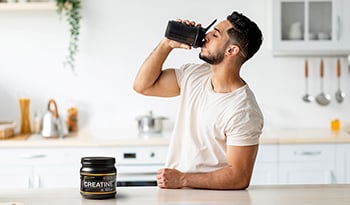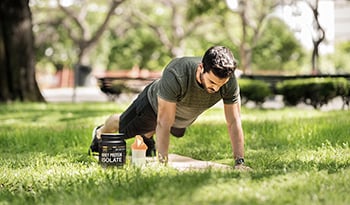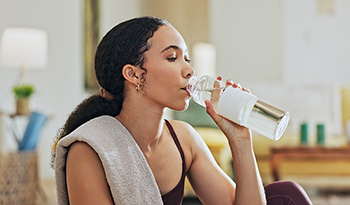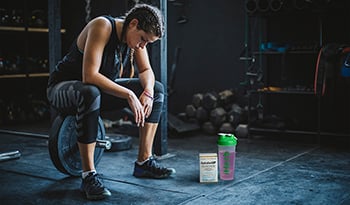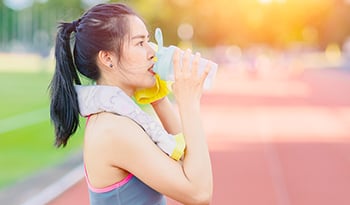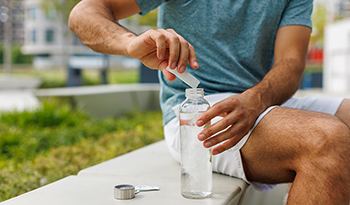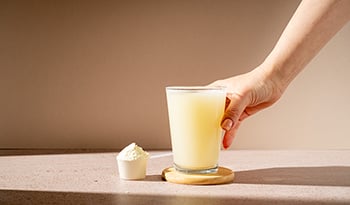Usate la curcuma per migliorare il vostro stile di vita attivo
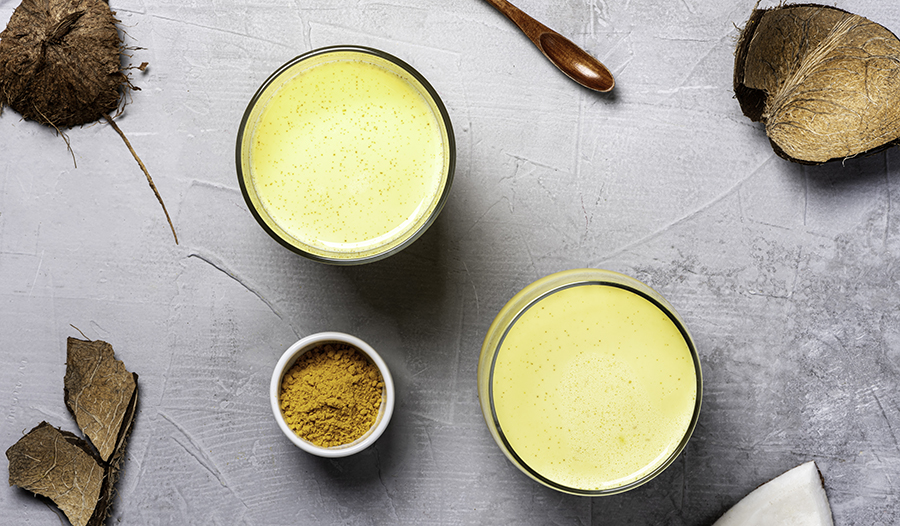
Se si esaminassero tutti gli integratori presenti sul mercato e si confrontassero i loro potenziali benefici in ogni aspetto della salute, difficilmente se ne troverebbero molti in grado di competere con la curcuma.
La curcuma è una pianta imparentata con lo zenzero che viene coltivata in India e in altre zone dell'Asia tropicale. Molto prima che l'industria degli integratori iniziasse a commercializzare pesantemente la curcuma per i benefici che le vengono attribuiti, la curcuma veniva utilizzata per scopi medicinali in gran parte dell'Asia meridionale.
Storicamente, la curcuma è stata utilizzata per trattare una pletora di problemi di salute come dolore estremo, problemi di respirazione e affaticamento. Tuttavia, al giorno d'oggi, la curcuma viene utilizzata come integratore per supportare diverse aree della salute, tra cui:
- infiammazione
- dolore articolare
- problemi di stomaco
- salute dell'apparato digerente
- indolenzimento muscolare
Inutile dire che i benefici della curcuma sembrano essere molto promettenti per la popolazione in generale e per le esigenze degli individui attivi. In questo articolo spiegheremo cos'è la curcuma e come viene utilizzata negli integratori, perché è un ottimo complemento al pepe nero e tre benefici per la salute che derivano dall'ingestione di questa antica spezia.
Che cos'è la curcuma?
Come già detto, la curcuma è una pianta della famiglia dello zenzero. In cucina si sente parlare di curcuma come di una radice d'oro e la curcuma è il motivo per cui le senapi e il curry hanno il loro aspetto giallo brillante. Le possibilità di utilizzo di questa pianta in cucina sono pressoché infinite. Ad esempio, la curcuma è uno degli ingredienti principali del curry in polvere e può essere utilizzata come spezia (curcuma macinata), come additivo per frullati (radice di curcuma fresca) o come mezzo per aumentare il sapore o ravvivare il colore di qualsiasi piatto.
Ciò che rende la curcuma così benefica per la salute è un ingrediente bioattivo all'interno della pianta, noto come curcumina.
La curcumina, un popolare integratore a sé stante, è il principale ingrediente attivo della radice d'oro. Ha molteplici proprietà antinfiammatorie e agisce nell'organismo come antiossidante . Esistono altri principi attivi nella curcuma, ma la maggior parte degli studi citati di seguito che esaminano i benefici dell'integrazione con la curcuma si concentrano sulla curcumina.
Per quanto riguarda l'integrazione, esistono diversi modi per consumare la curcuma. Le opzioni più popolari sono le capsule e le polveri, ma esistono anche creme, spray e liquidi alla curcuma.
Curcuma e pepe nero
A volte si vedono la curcuma e il pepe nero accoppiati negli integratori o se ne consiglia l'assunzione insieme, e questo per una buona ragione. Come abbiamo detto in precedenza, la curcumina è il principale principio attivo della curcuma e possiede quello che potrebbe essere considerato un effetto sinergico con la piperina, un principio attivo del pepe nero.
La piperina è un alcaloide, ovvero un composto organico presente in natura all'interno del pepe nero, che ha un effetto significativo sul corpo umano ed è stato suggerito per aumentare drasticamente l'assorbimento della curcumina nell'organismo. Oltre all'aumento dell'assorbimento, è stato suggerito che la piperina allevia il mal di testa e la nausea e ha proprietà antinfiammatorie.
Per questi motivi, e in particolare per il suo effetto sui tassi di assorbimento della curcumina, è stato suggerito di integrare il pepe nero e la curcuma. In teoria, se si riesce ad aumentare l'efficienza dell'organismo nell'assorbire un ingrediente antinfiammatorio altamente biodisponibile come la curcumina con un composto sinergico come la piperina, si potranno sfruttare ancora di più i suoi benefici.
Benefici della curcuma per la salute
1. Può ridurre l'indolenzimento muscolare
Questo è già stato menzionato in precedenza, ma uno dei maggiori benefici della curcuma per la salute è rappresentato dalle sue proprietà antinfiammatorie. Per i soggetti attivi, queste proprietà antinfiammatorie possono manifestarsi in una riduzione dell'indolenzimento muscolare.
In uno studio del 2017 pubblicato sul Journal of Sports Science and Medicine, gli autori hanno valutato gli effetti della curcumina sull'indolenzimento e sul danno muscolare in seguito all'esercizio fisico. Questo studio ha messo a confronto tre gruppi che hanno assunto dosi diverse di un integratore di curcumina. Un gruppo ha assunto 50 mg, l'altro 200 mg e l'ultimo gruppo ha consumato un placebo. 59 uomini e donne moderatamente allenati sono stati suddivisi nei rispettivi gruppi, quindi hanno partecipato a un regime di corsa in discesa.
Per valutare il danno e l'indolenzimento muscolare, gli autori hanno valutato le citochine plasmatiche, la creatina chinasi (un marcatore per valutare il danno muscolare) e la percezione dell'indolenzimento muscolare. Gli autori hanno effettuato queste registrazioni prima dell'allenamento e subito dopo, quindi a intervalli di 1 ora, 24 ore, 48 ore e 72 ore dopo il protocollo di allenamento.
Dall'analisi effettuata, gli autori hanno notato che il gruppo che ha assunto 200 mg di curcumina ha registrato livelli significativamente più bassi di indolenzimento muscolare percepito e una riduzione del livello di creatina chinasi. I ricercatori hanno concluso il loro studio suggerendo che la curcumina può avere effetti benefici sulla riduzione dell'indolenzimento e dei danni muscolari dopo allenamenti impegnativi.
2. Può migliorare il recupero
Poiché la curcumina può avere effetti benefici sulla riduzione dell'indolenzimento muscolare, non sorprende che possa anche migliorare il recupero. In uno studio del 2017 pubblicato sul Journal of Sports Science and Medicine, i ricercatori hanno esaminato l'uso di curcumina e piperina e i loro effetti sul danno e sul recupero muscolare.
Per questo studio, dieci giocatori di rugby d'élite sono stati divisi in quattro gruppi che hanno assunto curcumina e pepe nero o un placebo. Due gruppi hanno assunto curcumina e pepe nero e hanno eseguito un protocollo di allenamento su una gamba sola, sia sulla gamba dominante che su quella non dominante, mentre gli altri due gruppi hanno seguito lo stesso protocollo di allenamento ma con un placebo.
Gli autori hanno quindi valutato la coppia di picco, il salto di contromovimento, i livelli di creatina chinasi e l'indolenzimento muscolare subito dopo l'allenamento e a intervalli di 24, 48 e 72 ore dopo il protocollo su ciascuna delle gambe testate.
Hanno notato che i livelli di creatina chinasi erano elevati dopo l'allenamento, il che suggerisce che il loro protocollo era sufficiente a produrre l'indolenzimento muscolare. Dalle loro analisi è emerso che i gruppi sperimentali hanno registrato una diminuzione significativa dell'indolenzimento muscolare e dei livelli di creatina chinasi rispetto ai gruppi placebo.
3. Può aumentare i neurotrasmettitori
Oltre a migliorare il recupero e a diminuire l'indolenzimento muscolare, la curcuma può avere benefici anche per il cervello quando si tratta di migliorare i neurotrasmettitori come la serotonina e la dopamina, noti anche come ormoni del benessere.
In uno studio del 2008 pubblicato sul Journal of Pharmacology, i ricercatori hanno valutato se la curcumina, se integrata con la piperina, avesse effetti antidepressivi. Durante l'analisi, gli autori hanno notato che l'integrazione di curcumina e piperina era in grado di migliorare leggermente i livelli di dopamina e serotonina, entrambi legati all'umore generale.
Vale la pena di notare che questo studio è stato condotto sui topi, quindi l'effetto sull'uomo potrebbe essere leggermente diverso. Inoltre, è necessario condurre ulteriori ricerche prima di trarre conclusioni definitive, tuttavia questo studio è promettente per evidenziare i potenziali benefici sinergici della curcumina e della piperina.
La curcuma è sicura?
In generale, è stato suggerito che un'integrazione regolare con curcuma è sicura. Tuttavia, è stato suggerito che la curcuma può causare disturbi gastrointestinali se integrata per lunghi periodi di tempo, ma questo varia da individuo a individuo.
Come per qualsiasi integratore o cambiamento nella dieta, è sempre consigliabile consultare un medico prima di assumere qualcosa di nuovo.
La curcuma può essere una potente aggiunta al regime di salute quotidiano di chiunque, se integrata in modo strategico e consapevole. La curcuma può essere utilizzata in cucina o assunta come integratore, quindi è facile da consumare regolarmente e può essere modificata per adattarsi al meglio alle tue esigenze.
Bibliografia:
- https://www.ncbi.nlm.nih.gov/pmc/articles/PMC5358025/
- https://www.fasebj.org/doi/abs/10.1096/fasebj.31.1_supplement.lb766
- https://link.springer.com/article/10.1007/s00213-008-1300-y
ESONERO DI RESPONSABILITÀ:Questo Centro Benessere non intende fornire diagnosi...














































































 Indice
Indice




